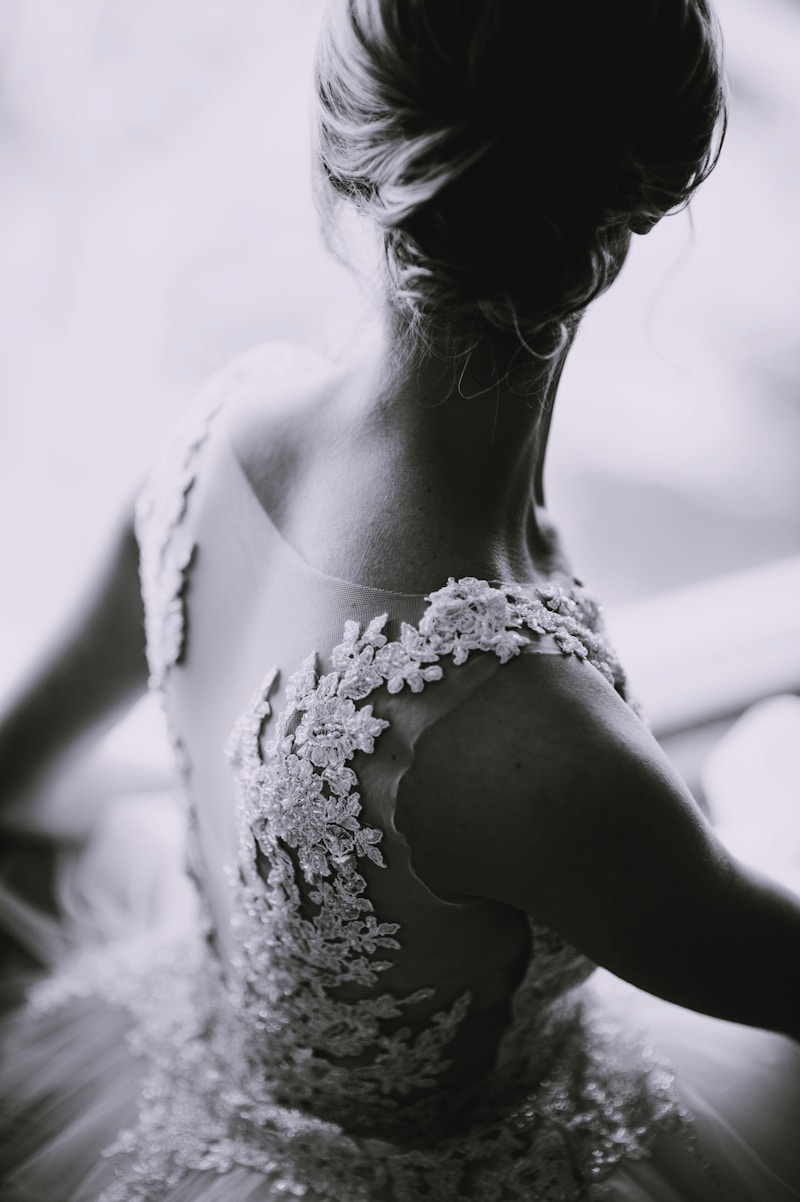How to Balance Proportions in Wedding Attire: A Comprehensive Guide
Weddings are monumental occasions filled with love, commitment, and a dazzling array of fashion choices. One of the key aspects of looking stunning on a wedding day is the ability to balance proportions in wedding attire. Achieving the perfect balance not only enhances your appearance but also boosts your confidence. This article will guide you through the essentials of balancing proportions in wedding attire for both brides and grooms.
Understanding Proportions in Wedding Attire
Before we dive into how to achieve that coveted balance in your wedding outfit, it's essential to understand what proportions mean in this context. Proportions refer to the relationship between the different elements of your attire, such as the bodice, skirt, sleeves, and accessories. Maintaining harmonious proportions ensures that your outfit is flattering and visually appealing.
The Importance of Body Shapes
Every bride and groom has a unique body shape, and recognizing your own is key to understanding how to balance proportions in wedding attire. Here are the most common body shapes and tips for each:
| Body Shape | Attire Tips |
| Hourglass | Opt for dresses or suits that cinch at the waist to accentuate curves. |
| Apple | Choose A-line dresses or tailored suits that create a structured look. |
| Pear | Wearing a bodice with embellishments can draw attention upwards while offering balance. |
| Rectangle | Lace details and layered skirts can create the illusion of curves. |
| Inverted Triangle | Soft, flowing skirts will balance broader shoulders. |
Fabric Choices and Their Impact
The fabric you choose plays a significant role in the overall look of your wedding attire. Different materials can affect how proportions are perceived. For instance:
- Lightweight Fabrics: Fabrics like chiffon and tulle create an ethereal look and can be layered to add volume without bulk.
- Structured Fabrics: Silk and satin provide a sleek and polished appearance, ideal for tailored suits or fitted dresses.
- Textured Fabrics: Lace or brocade can draw attention to specific areas and help balance proportions through the design.
Color and Pattern Considerations
Color and patterns can greatly influence how proportions are perceived. Here’s how to effectively work with colors and patterns in wedding attire:
- Monochromatic Colors: Opting for a single color can elongate your figure and create a unified look.
- Vertical Stripes: These can help create a longer silhouette, which is particularly advantageous for shorter brides or grooms.
- Bold Patterns: While they can be fun, ensure that patterns don't overwhelm your form; large, bold patterns may need to be balanced with solid colors.

Accessorizing Wisely
Accessories can either complement your balanced proportions or disrupt them if not chosen wisely. Here are some tips for selecting the right accessories:
- Belts: A well-placed belt can effectively draw attention to the waist, enhancing your silhouette.
- Jewelry: Choose pieces that complement your dress or suit without overshadowing it. Opt for statement pieces for a low-cut neckline.
- Shoe Length: The length of your shoes can impact how your proportions are perceived. For example, strappy sandals can elongate your legs.
Tailoring: The Key to Perfect Proportions
When it comes to wedding attire, one size does not fit all, and this is where tailoring becomes paramount. A skilled tailor can make necessary adjustments to ensure that every piece fits beautifully and enhances your proportions. Here’s why tailoring is vital:
- It allows for personalized adjustments based on your body shape.
- Ensures that the dress or suit complements your overall frame perfectly.
- Can transform off-the-rack pieces into custom-fitting attire that feels luxurious.
Final Touches: Hair and Makeup
Your overall appearance is not solely defined by your attire; hair and makeup play an immense role, too. Consider the following:
- Hairstyle: Opt for hairstyles that complement your neckline and overall proportions. A classic updo can elongate the neck.
- Makeup: The right makeup can highlight your features and bring your look together. A focus on the eyes or lips can draw attention where you want it most.
Grooming for the Grooms
While much of the focus tends to be on brides, grooms also play a crucial role in wedding attire proportions. Here are some essential tips:
- Fit of the Suit: A tailored suit can transform a man's look, making him appear sharp and put-together.
- Shirts and Ties: Ensure the shirt fits well around the neck and shoulders; patterns in ties should complement the suit's color.
- Shoe Coordination: The right shoes enhance the whole outfit. Ensure they are stylish yet comfortable for the big day.
Understanding Cultural Nuances in Wedding Attire
Weddings are often steeped in cultural traditions, which can influence attire choices. Understanding these cultural nuances can be important in balancing proportions appropriately. For example:
- In traditional Indian weddings, brides often wear heavy lehengas that require careful consideration of proportions, especially with accessories like dupattas.
- Western cultures may lean towards tailored suits for grooms and elegant dresses for brides, where proportion balance is equally crucial.
Conclusion: Achieving the Right Balance
Achieving the perfect balance of proportions in wedding attire is essential for making a stunning impression on your special day. By understanding your body shape, choosing the right fabrics, considering colors and patterns, accessorizing wisely, and investing in tailoring, you can create a look that enhances your beauty and boosts your confidence. Remember that every detail counts, including hair, makeup, and cultural considerations. Keep these tips in mind as you prepare for the big day, and enjoy the beautiful journey of love and celebration!